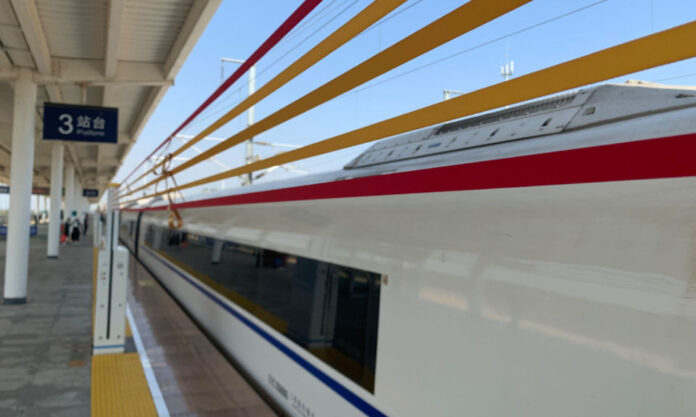Safety barriers on railway-station platforms in China are back in the public consciousness after a suicide earlier this week in front of hundreds of onlookers. The issues? Why are they not now standard equipment at all stations? Is it the cost?
On 4 September, a man committed suicide by jumping from the platform at Tengzhou East Station in Shandong Province as a train entered the station. Not only did he pay the price with his life, but many trains were subject to delay, while passengers who witnessed the incident were left psychologically traumatised.
The resulting public discussion is as to whether safety barriers should be near-universally installed at railway stations, as is common in Japan for example.
Many stations in China have already taken the initiative. As the Yangtze Evening News reports, the cities of Zigong, in Sichuan province; and Kunming in Yunnan, have done so, as have many in more northern Henan Province. There, the barriers are installed along platforms at Zhengzhou East Station, Anyang East Station, Lankao South Station, Kaifeng North Station and Songcheng Road Station, among others.
Platform-safety barriers come in various forms, but all share the characteristic that they are raised and lowered, as opposed to barriers on metro systems, which are doors aligned with the point at which trains stop. This cannot be done with traditional railway trains on account of varying train lengths, door positioning and the fact that they don’t always stop at the right place.
At Kaifeng North, where barriers have been in operation for over 2 years, they take the form of ribbons, whereas closer to home in Jiangsu, platform-safety barriers installed recently at Suzhou Station comprise long glass panels.
Looking to the experience of our neighbour to the east, suicides at stations in Japan was a major problem for many years. There, media discovered that among all railway lines in the country, between 2005 and 2014 only two had a zero-suicide rate. All stations on these two lines have platform-safety barriers.
But they come at a financial cost too. Back in China at Zhengzhou East, barriers installed to date have cost an average of almost ¥270,000 per platform. At big stations, several million renminbi shall need to be spent to achieve complete platform-wide coverage.
Concerns away from cost are also pointed at the glass type of safety barrier. With trains passing through stations at very high speeds in close proximity to the barriers, many feel the integrity of the glass shall be degraded over time, potentially causing more injuries than they were designed to prevent.















